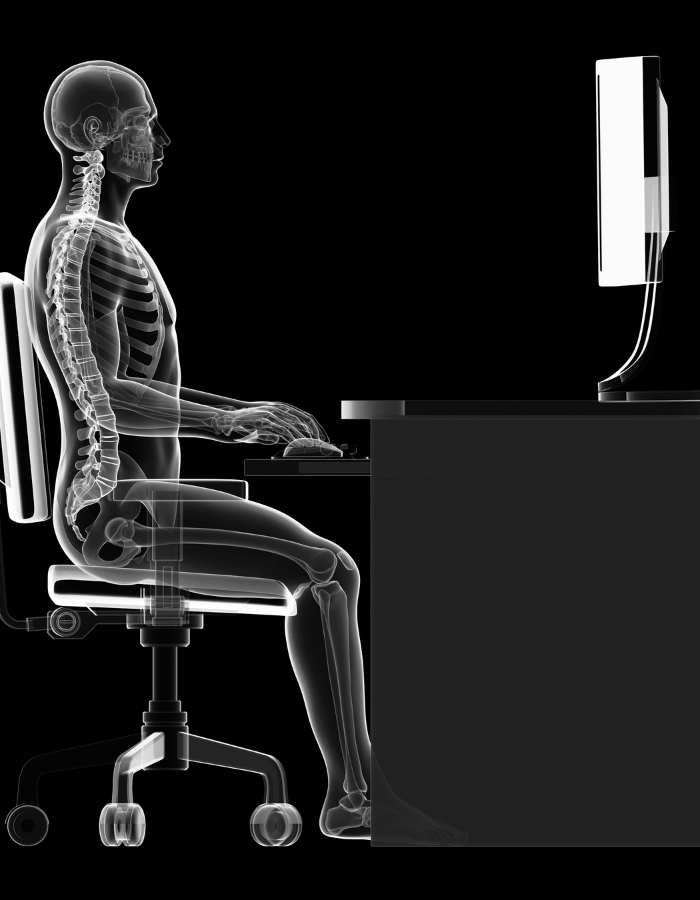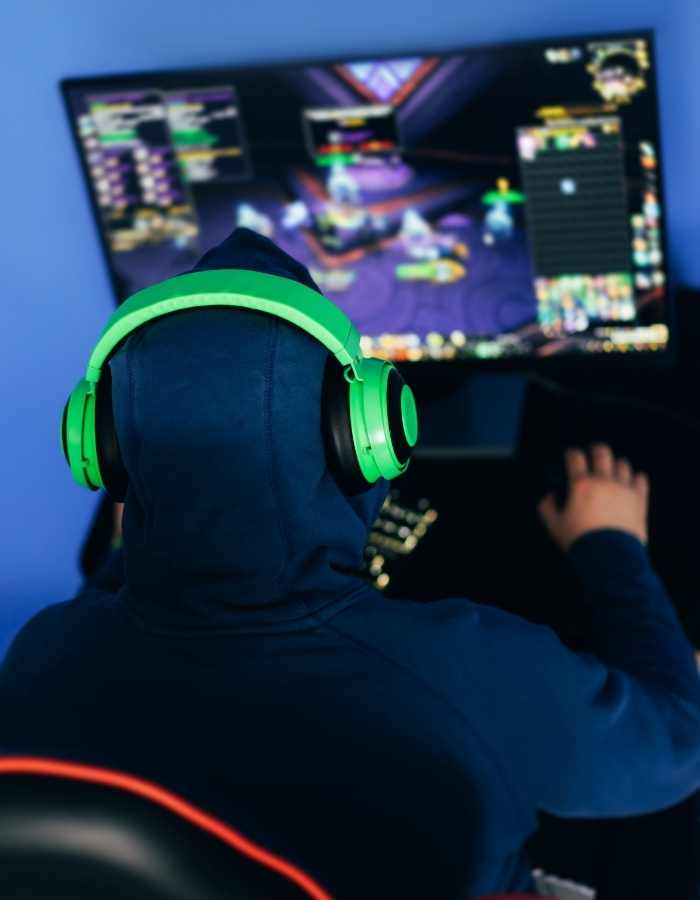We hear a lot about maintaining proper posture at work. The desk, chair, keyboard, and computer monitor all need to be arranged at the perfect angle, distance, and height for maximum comfort and productivity.
We also know that, on the other hand, poor posture will have detrimental physical effects, causing pain, discomfort, long-term problems, and even lower productivity.
And the importance of good posture doesn’t end when you leave the office. Poor posture affects our breathing, digestion, and muscle health. If you’re a big-time gamer, you might also risk further physical damage by sitting in a gaming chair with poor posture.
After a long day at work, perhaps all you want to do is spend the night playing a few video games (fair). But are you paying attention to your posture?
If you don’t maintain a good gaming posture, your health could seriously suffer. Interestingly, so could your gaming skills.
Gaming is something of an endurance sport, and your posture can make or break your distance.
In fact, keeping good posture is often harder at home than at work. You might be tired or just really into your game. But it’s time to fix this. How?
We’ve got everything you need to do about proper gaming posture in the sections below.
How to Improve Your Gaming Posture
Maintaining a Neutral Spine
The human spine consists of a natural, gentle curve. It curves out around your upper back and shoulders, and curves in at your lower back, just above your hips.
Poor posture, or slouching, gets rid of this curve. This puts pressure on your lower spine and supporting muscles, meaning that other areas of your body are working harder than they should to keep you upright.

To sit upright, imagine there’s a string running from the top of your head and from your chest. Use this imaginary string to gently straighten out your spine. Don’t stretch your head forward. Instead, tuck your chin in (And don’t worry about that double chin. No one can see you!).
A good gaming chair will work towards keeping your spine supported. Of course, not everyone can afford fancy gaming chairs. If you’re using a regular chair, try padding out the back with a cushion or towel.
Bring Your Attention to Your Lower Back and Hips
One of the most common places for back pain is in the lower back. Your lower back and the lower section of your spine are directly influenced by your hips.
If you roll your hips backward, you’ll hunch your spine, smoothing out the curves of your back. This puts pressure on your spine.
However, if you roll your hips too far forward, you’ll over-exaggerate the arch of your lower back. Some people think this will help, but in fact, it compounds back pain and strains the muscles in your back.
Keeping your hips centered and balanced is the key to reducing pain in the lower back.
The hips are also connected with your leg position. Your feet should be flat on the floor, with your thighs angling slightly downwards. Meanwhile, your knees should be about hip-width apart. This is known as the neutral position and puts the least strain on your hip joints.
Get Those Shoulders Back
The shoulders are directly affected by the mid and upper back. Poor spinal posture will cause your shoulders to sag or, more commonly, round over.
Unfortunately, shoulder injuries are common today. The shoulder moves every which way, leaving it very vulnerable and susceptible to injury.
To fix poor shoulder posture, first, make sure your spine is properly aligned. Then, gently pinch your shoulder blades down and back. Do not shrug or hunch your shoulders here. The idea is to open up your chest and help you keep those shoulders back.
But fixing poor shoulder posture is more than just pushing our shoulders back. This can emphasize the curve of the lower back, which as we know, is poor posture and can cause problems. At the same time, it’s important to pay attention to your core and slightly engage it so that the lower back is protected.
What Should You Do With Your Arms and Hands?
Forearms, wrists, and hands can sometimes be overlooked. However, poor ergonomics and bad posture can lead to slower typing and response time. In time, more serious health issues can develop, like repetitive strain or carpal tunnel syndrome.
Generally, your forearms should be parallel to the floor. The gaming desk or keyboard shouldn’t be digging into your wrist.
Now, good hand posture can be a little trickier. We need to make mouse movements to move the cursor on the screen, and we often don’t think about how we move our hands.
First of all, make sure that your hand is also parallel to the floor and desk. Your hand and your mouse shouldn’t be angled. Try not to have your hand twisted. If possible, when in a neutral position, your forearm should make a straight line, all the way from your elbow to your middle fingertip. Return your hand to the neutral position as often as you can. Soon, it’ll become a habit.
If you’re holding onto a gaming controller, consider having an area to rest your hands and wrist. You’ll notice without one that your forearms and wrists will get pretty sore pretty fast!
–> Despite the general advice for keeping a neutral position with your mouse, some office workers and swear by the vertical mouse – read this guide to see if a vertical mouse makes sense for you.
Posture Check: Set the Rules
Despite our best efforts, we’ll likely catch ourselves hunching over sometimes. Especially if you’re engrossed in online gaming, it’s hard to remember to straighten up or take a break.
If you’ve slipped into bad posture habits, it can take time to get out of that habit. With that in mind, here are two main ways you can create posture checks:
Set a timer.
Often, the simplest solution is to set an alarm to go off after a certain period of time. When that alarm goes off, you might want to take a five or ten-minute break. Then when you return, make a conscious effort to sit with good posture for as long as you possibly can.
Choose natural breaks.
Check your posture at certain intervals. For example, at every game checkpoint you pass or complete, take a minute to straighten up and check your posture and your general position.
Taking time out from an engrossing game can be a little annoying. However, remember that good posture can actually enhance your gaming skills, as well as make you feel a little more comfortable.
Work On Your Gaming Posture – Starting Today!
Posture isn’t just about appearance. Our bodies adapt to poor posture, and not in a good way. We may only see a hunched-over back while we game, but inside, our muscles are adjusting to the stress we’re putting on them. The body is a very adaptable machine.
Yet, good posture means good health. Good health means better gaming! So, straighten up. Maybe you’ll be able to beat that next level when you do.
